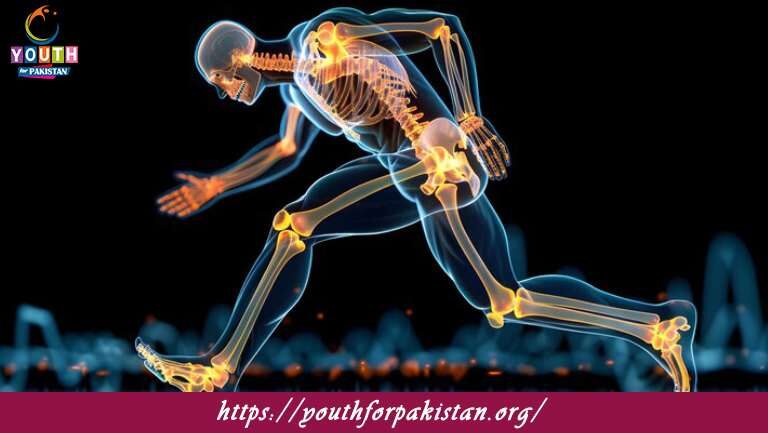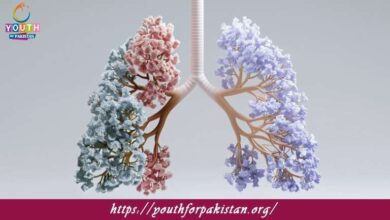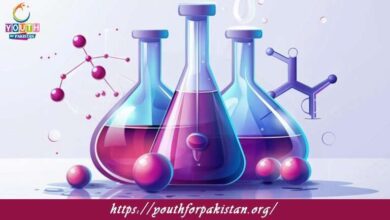“10th Class Biology Chapter 13 Quiz: Support and Movement” explains how organisms, especially human beings, sustain the structural support and carry out locomotion. This chapter is very important for MDCAT students because it enables them to understand the skeletal and muscular systems in great detail, which are quite vital while studying human anatomy. Our MDCAT Quiz for this chapter will help you understand the complexities of support and movement systems in the body.
The chapter opens with a discussion on the skeletal system, covering its role in giving shape, protecting vital organs, and facilitating movement. Students learn about bones and their functions, such as providing leverage for muscles to produce movement. The chapter continues to describe the different types of joints: ball-and-socket joints, hinge joints, and pivot joints, explaining how they enable different kinds of movements. The muscular system is also explored, and the structure and function of the three types of muscles—skeletal muscles, smooth muscles, and cardiac muscles—are discussed in detail. Students will learn about muscle contraction, including the role of actin and myosin filaments in the sliding filament theory. The chapter concludes with a discussion on locomotion in various organisms and the importance of the musculoskeletal system in daily activities and overall health.
MDCAT Quiz: Challenge Your Knowledge of Support and Movement
Our MDCAT Quiz for Chapter 13 provides students with a series of questions, testing the understanding of the skeletal and muscular systems. Starting from the very basic structure of bones to the mechanism of muscle contraction, this quiz is designed in such a way that it helps students prepare for the MDCAT exam by strengthening the grasp of concepts related to support and movements.
- Test Name: 10th Class Biology Chapter 13 Quiz
- Type: Quiz Test
- Total Questions: 30
- Total Marks: 30
- Time: 30 minutes
Note: Answer of the questions will change randomly each time you start the test, once you are finished, click the View Results button.
0Get Your Username and Password for MDCAT Tests
Sign Up Now
Free Flashcards for Support and Movement
Revise key concepts with free flashcards for Chapter 13. The flashcards cover important topics such as bone structure, types of joints, muscle contraction, and the musculoskeletal system. Flashcards are a good way to revise quickly, hence they are good when one is preparing for MDCAT-related questions on the skeletal and muscular systems.

Which type of muscle is under involuntary control and found in the digestive tract?

What is the purpose of the spongy bone in the structure of bones?
Provides strength with reduced weight

Which bone is commonly known as the thigh bone?

What is the function of the sarcomere in muscle contraction?
The basic contractile unit containing actin and myosin

Which type of muscle is found in the walls of the heart?

What is the term for the tough, fibrous connective tissue that surrounds joints and provides support?

Which muscle is responsible for extending the forearm at the elbow joint?

What is the function of the Haversian canals in compact bone?
Allow blood vessels and nerves to travel through the bone

Which type of joint is found in the knee and elbow, allowing for flexion and extension?

What is the purpose of the foramen magnum in the skull?
Allows the spinal cord to pass through and connect to the brain

Which hormone stimulates muscle contraction by binding to receptors on muscle fibers?

What is the term for the tough band of connective tissue that connects muscle to bone?

Which type of muscle is striated and involuntary?

What is the purpose of the myofibrils in muscle cells?
Contain the contractile units (sarcomeres)

Which connective tissue covers the ends of bones in a joint and reduces friction?

What is the primary function of the appendicular skeleton?
Facilitates movement and locomotion

Which type of joint is found between the carpal bones of the wrist?

What is the function of the synovial membrane in joints?
Produces synovial fluid for lubrication

Which bone is commonly known as the shoulder blade?

What is the term for the point of contact between a motor neuron and a muscle fiber?

Which muscle is responsible for the primary movement during inhalation?

What is the function of the periosteum in bone structure?
Provides nutrients and serves as a site for tendon and ligament attachment

Which type of joint is found between the radius and ulna in the forearm?

What is the purpose of the muscular system in the human body?
Movement, stability, and heat production

Which hormone plays a crucial role in regulating calcium levels in the blood and bone?
Parathyroid hormone (PTH)

What is the function of the bursae in joints?
Reduce friction between tendons and bones

Which type of muscle is found in the walls of internal organs, such as the stomach?

What is the term for the tough, fibrous connective tissue that attaches muscles to bones?

Which type of joint is found between the phalanges (finger bones)?

What is the purpose of the vertebral column in the human body?
Supports the body and protects the spinal cord
Experience the real exam environment with our expertly designed collection of over 25,000 MCQs MDCAT Mock Tests.
View Your Dashboard







